
JERUSALEM (JTA) — Full disclosure: This is the third time in the past year that we have published this article. With only minor changes.
Join our WhatsApp groupSubscribe to our Daily Roundup Email
That’s because on Monday, March 2, for the third time in the past 12 months, Israelis will be voting in a national election. The first election, in April 2019, ended with Prime Minister Benjamin Netanyahu’s Likud Party getting the most votes. But he wasn’t able to form a majority coalition in Israel’s parliament, the Knesset, so Israelis went to the polls again in September.
That time, the centrist Blue and White Party won the most votes. But Blue and White, led by former General Benny Gantz, wasn’t able to form a coalition either — and nor was Netanyahu. So now, after a year of uncertainty, Israelis will be voting yet again.
They hope the third time is the charm. In other words, they hope this election produces a clear winner and a functioning government.
A lot has happened since the September election. Most importantly, in November, Netanyahu was indicted for fraud, bribery and breach of trust. He is the first prime minister in Israel’s history to be indicted while in office. His immediate predecessor, Ehud Olmert, resigned while facing indictment.
And in January, with Netanyahu and Gantz in Washington D.C., President Donald Trump unveiled his Israeli-Palestinian peace plan, which gives Israel the green light to annex portions of the West Bank. Both Netanyahu and Gantz praised the plan, and Netanyahu vowed to begin annexing territory — a move that U.S. officials have said needs to wait until after the election. (The Palestinians have categorically rejected the plan as falling far short of the bare minimum they would accept.)
But despite all of the news, polls have not shifted. Likud and Blue and White are still neck-and-neck at the top, each slated to win 30-some of the Knesset’s 120 seats. And, just as in the previous two rounds, neither party has a clear path to assembling a majority coalition of like-minded parties.
Israeli politics are famously tumultuous, but this is beyond unprecedented: Israel has never held two successive elections, let alone three with no end in sight. And it’s never held an election with the sitting prime minister about to go on trial for corruption.
This guide outlines the big questions that next week’s election will answer, breaking down how Israel’s government is constructed; why Israelis are going to the polls again; and who’s competing for power in the next government.
Who’s running? Or Israel’s nine biggest political parties, each explained in one sentence (or two)
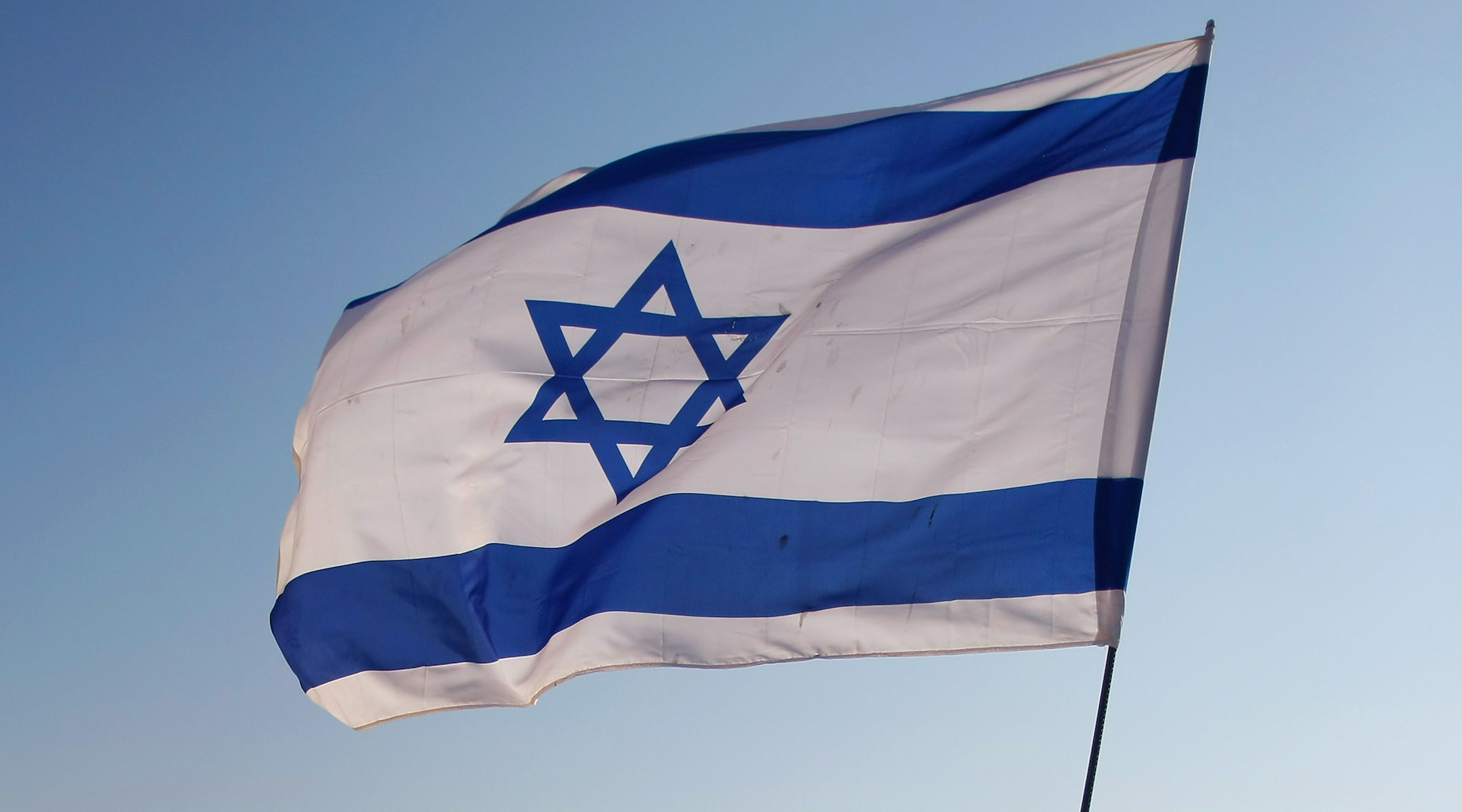
(David Silverman/Getty Images)
Israel’s election is a free-for-all: Instead of two major parties, there are 29 parties competing at the ballot box. Israelis vote for parties, not individual candidates (the candidates are chosen by the parties, some through primaries). The more votes a party gets, the more seats it has in Israel’s 120-seat parliament, the Knesset. A government is formed by a coalition of (mostly) like-minded parties that together capture a majority of more than 60 seats.
Polls show that eight parties are likely to win Knesset seats in next week’s election, though there are usually surprises. Here’s a short description of each of them.
The front-runners:
Likud, Israel’s right-wing flagship and Netanyahu’s party, supports annexation of parts of the West Bank and encourages privatization in the economy. Its main selling point, however, is the long-serving prime minister, who is seeking his fifth term.
Blue and White is a centrist coalition led by Gantz, a onetime army general. It was created to oppose Netanyahu and his alleged corruption but has remained vague about specific policy positions.
Supporting actors on the right:
Yisrael Beiteinu, which champions the interests of Russian-speaking immigrants and opposes the influence of Orthodox parties in government, is the kingmaker — and has pushed for a unity government between Likud and Blue and White.
Yamina is an alliance between the hard right and religious Zionists that supports increasing Orthodoxy’s influence in Israel and settlement growth while staunchly opposing Palestinian statehood.
United Torah Judaism is the Ashkenazi haredi Orthodox party — the guys (they’re all guys) who support Orthodox control of Israel’s religious life, oppose mandatory army service for their followers and speak Yiddish.
Shas is the Sephardi haredi party — the guys (again, all guys) who stand for religious traditionalism as well as the rights of Israel’s Mizrahi, or Middle Eastern and North African, Jewish population.
Supporting actors on the left:
The Joint List is a union of four disparate Arab-Israeli parties that advocates for that minority’s rights in Israel, as well as Palestinian statehood. It is projected to be the third-largest party in the incoming Knesset.
Labor-Gesher-Meretz is the liberal Zionist party of this election, a combination of one new party (Gesher) with two older ones (Labor and Meretz). Labor, once Israel’s largest and most dominant party, now must merge with smaller factions that were previously its also-rans in order to advance its vision, which includes the establishment of a Palestinian state and a social-democratic economic system.
— Ben Sales
Why is there a third election in the span of one year?
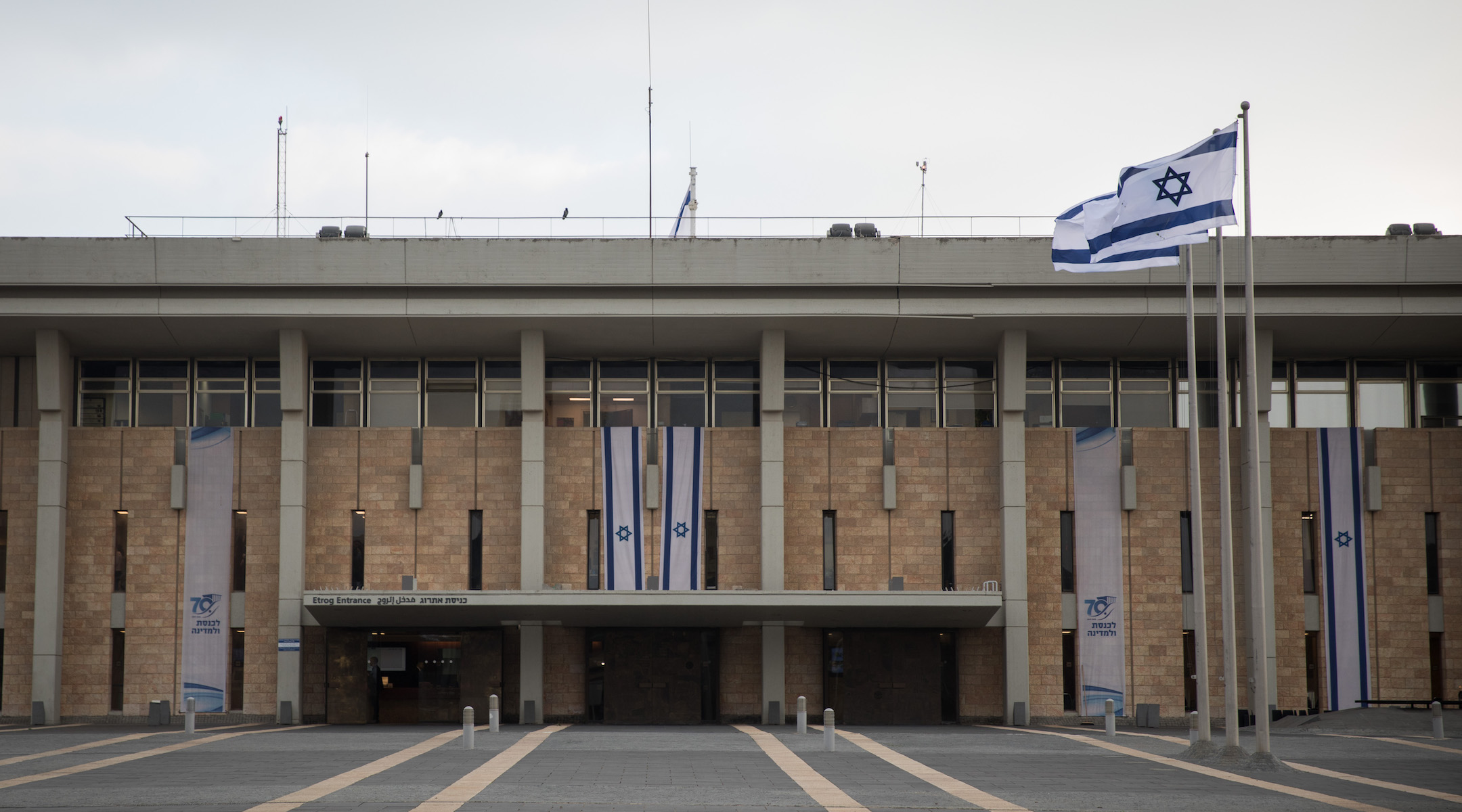
A view of the main building of the Knesset, Israel’s parliament, in Jerusalem, Dec. 26, 2018. (Hadas Parush/Flash90)
First, it’s important to understand how Israel’s government works.
In broad strokes, the government operates under a proportional representation system, and elections are held every four years (unless they are called earlier, which they almost always are. See below for more on why).
There are 120 seats in the Knesset. To gain a seat, a party needs to win at least 3.25% of the vote. Whoever wins at least 61 seats controls the government.
Simple enough, right?
Well, no — because no party has ever won the necessary 61 seats. That means the party with the most votes has to form coalitions with other smaller parties to reach the threshold.
In the 2015 elections, the Netanyahu-led Likud won 30 seats and formed a coalition with smaller right-wing and religious parties. But it began to fold in 2019 when the right-wing, secularist Yisrael Beiteinu left the coalition, disgusted by a ceasefire with Gaza militants. Coalition disagreements over a bill to draft haredi Orthodox men into the military caused the party heads to call for new elections. The parties were also tense over Netanyahu’s pending indictment for corruption.
But a funny thing happened in the April elections. The right wing seemed like it won a majority again, but Netanyahu couldn’t form another coalition. The issue was the same one that doomed his last government: the haredi, or ultra-Orthodox, draft bill. Yisrael Beiteinu insisted that it be passed, and the haredi parties insisted that it be softened. Unable to pull his partners together, and scared of giving his rivals a chance to form a government, Netanyahu called for another round of elections.
In that second round in September, Blue and White, the centrist coalition led by Benny Gantz, won the most votes. Gantz and Netanyahu both got a chance to form a government, but neither could do so. Netanyahu’s allies stuck with him, but fell short of a majority. In order to form a coalition with the remaining parties, Gantz would have had to find common ground across wildly different agendas. For example, he would have needed to get opponents of a Palestinian state to join a government with Palestinian citizens of Israel. He couldn’t do it, so a third round of elections were called.
In the unending limbo, the country is still led by the incumbent prime minister — Netanyahu, in this case — and his cabinet. While the government and Knesset still technically have all of the authority of a regular government, the Israeli Supreme Court has ruled that they cannot introduce major initiatives or make significant changes to laws. In addition, the state can’t pass a budget until a new majority government is formed, which is leading to funding crises at some nonprofit organizations that rely on government spending.
— Emily Burack
Can Netanyahu win after being indicted for corruption?
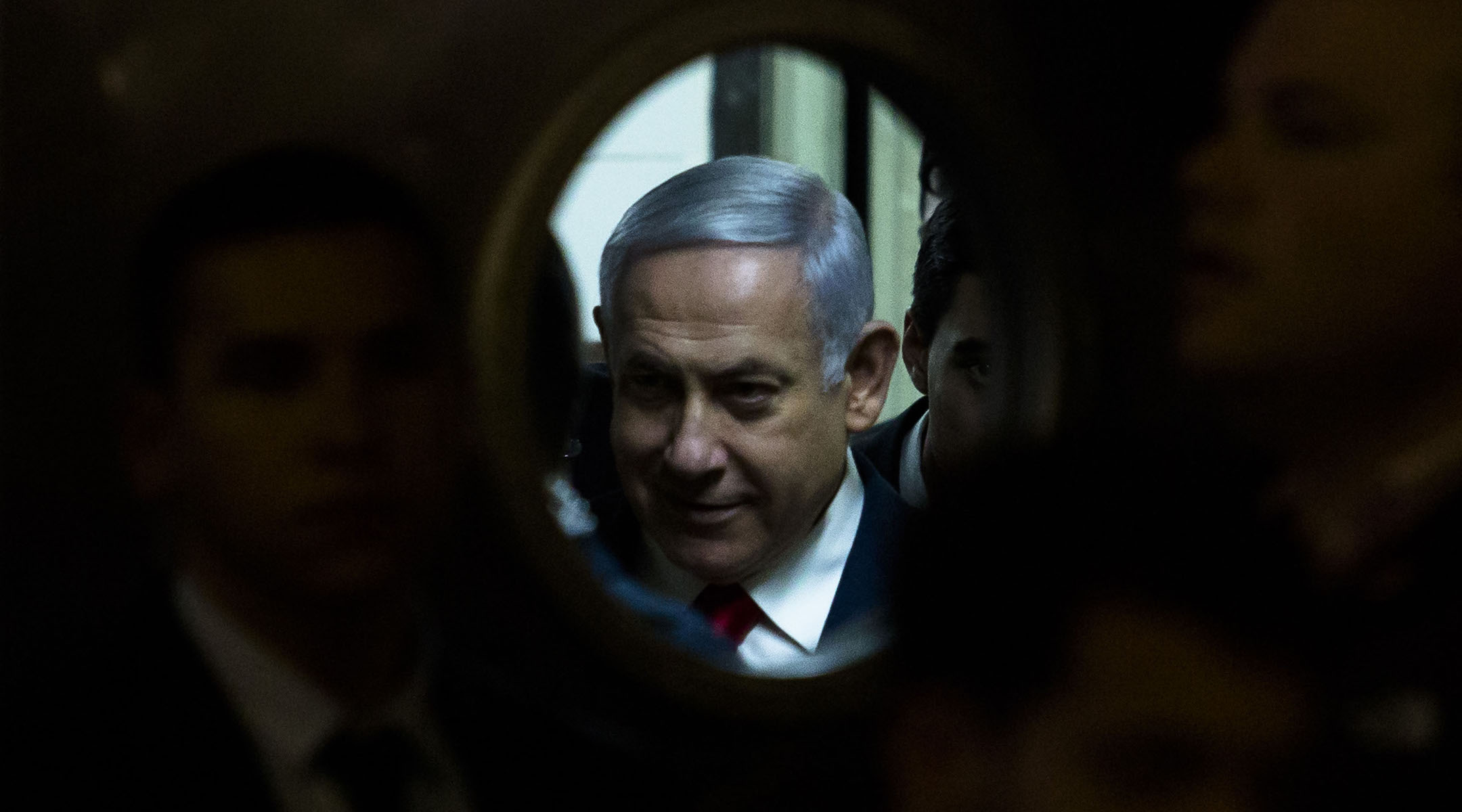
Prime Minster Benjamin Netanyahu attends the launch of the Likud party election campaign in Ramat Gan, March 4, 2019. (Amir Levy/Getty Images)
Benjamin Netanyahu is the first sitting prime minister to be indicted on criminal charges — but that doesn’t mean he won’t be reelected.
Netanyahu allegedly attempted to improve his media coverage through illegal dealmaking on multiple occasions and is accused of receiving $200,000 in illegal bribes of Cuban cigars and champagne.
On Nov. 21, Attorney General Avichai Mandelblit formally indicted Netanyahu in three separate corruption cases, charging him with fraud, bribery and breach of trust. Netanyahu attempted to secure immunity through a parliamentary vote, but withdrew the request after it was clear he would lose the vote. Unlike his predecessor, Olmert, who resigned when it was clear he would face criminal charges, Netanyahu has declined to step down and remains defiant.
“[The left has] mounted a thuggish, incessant campaign of pressure – I’d say almost inhuman – on the attorney general,” Netanyahu said the day the indictment was issued.
The Netanyahu base has remained loyal throughout the scandals. They see him as an effective captain of Israel’s ship in a turbulent region. His current administration has spanned the Great Recession, the Arab Spring, the Syrian Civil War and two conflicts with Hamas in Gaza — not to mention two American presidents. Through it all, his supporters say, he has kept Israel stable, thriving economically and as safe as possible.
Even if Netanyahu is reelected under indictment, there is likely no law that bars him from remaining in office. Whether he could be effective is another question: His trial is set to begin on March 17, about two weeks after the election and during the time when a governing coalition would be assembled.
– Laura E. Adkins
Can Benny Gantz’s coalition challenging Netanyahu continue its rise?
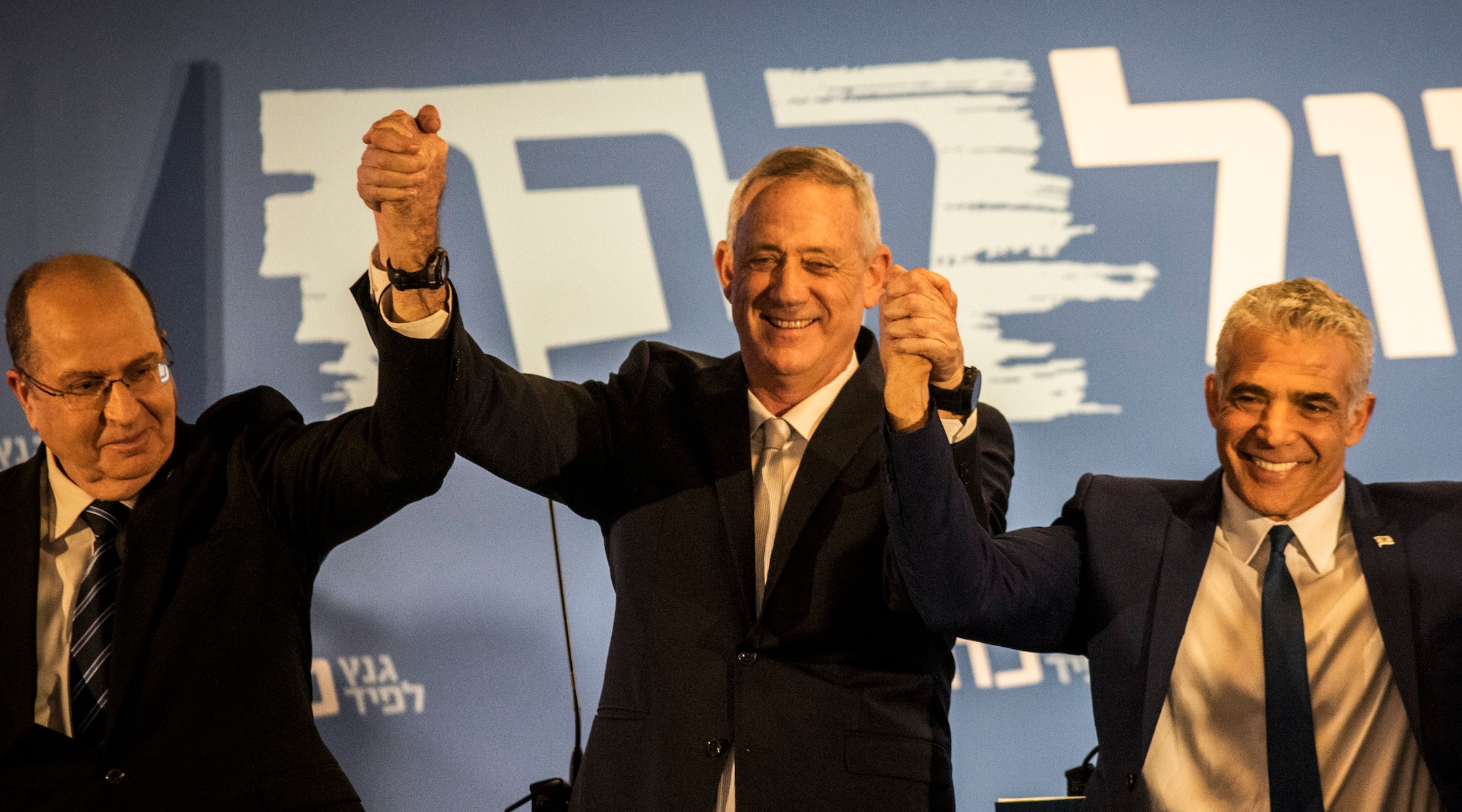
From left to right: Moshe Yaalon, Benny Gantz and Yair Lapid, the leaders of the Blue and White coalition, at the announcement of their alliance in Tel Aviv, Feb. 21, 2019. (Ilia Yefimovich/Getty Images)
After dispatching a series of opponents over the past decade, Netanyahu appears to have met a worthy adversary.
One year ago, Gantz decided to merge his new party with Yesh Atid, a centrist party headed by former news anchor Yair Lapid and focused primarily on economic and social issues. They named the alliance Blue and White for the colors of Israel’s flag.
In the April election, Blue and White fought Netanyahu’s Likud to a tie, with each party winning 35 seats in the 120-seat Knesset. In September, Blue and White pulled ahead, winning more votes — and one more Knesset seat — than Likud. It marked the first time since 2006 that Likud did not win the most votes in an election.
One big question in this election is whether that trajectory continues — though further gains would be unlikely to end the challenge of forming a government.
After nearly three complete election campaigns, it’s still hard to discern where exactly Gantz stands on most issues. But from what we’ve seen, he is a centrist. Blue and White’s platform emphasizes global collaboration on security issues and true Israeli democracy that recognizes Arab Israelis as equal citizens and requires religious Jews to serve in the army. Gantz praised Trump’s peace plan — which calls for Israeli annexation of parts of the West Bank — but he has been unclear about how and whether he would implement it.
Though this latest election is Gantz’s third foray onto the political stage, he is well respected as a general, having served as the army’s chief of staff from 2011 to 2015. In Israel, former chiefs of staff cannot serve in Knesset for at least three years after completing their service, so last year was Gantz’s first opportunity to run.
Ahead of the March election, Likud and Blue and White are virtually tied in the polls, as they have been for the entire year. Both are expected to again pick up a little more than 30 seats. The party that receives the most seats — or has the greatest number of allies — will have another chance to cobble together a governing majority coalition of at least 61 seats.
But with neither appearing able to garner a majority, they may be forced to govern together after more than a year of campaigning against each other. After the September elections, attempts at a unity government failed. Whether they can succeed this time — after months of mutual acrimony — remains to be seen.
– Laura E. Adkins
What happened to the once-formidable Labor Party?
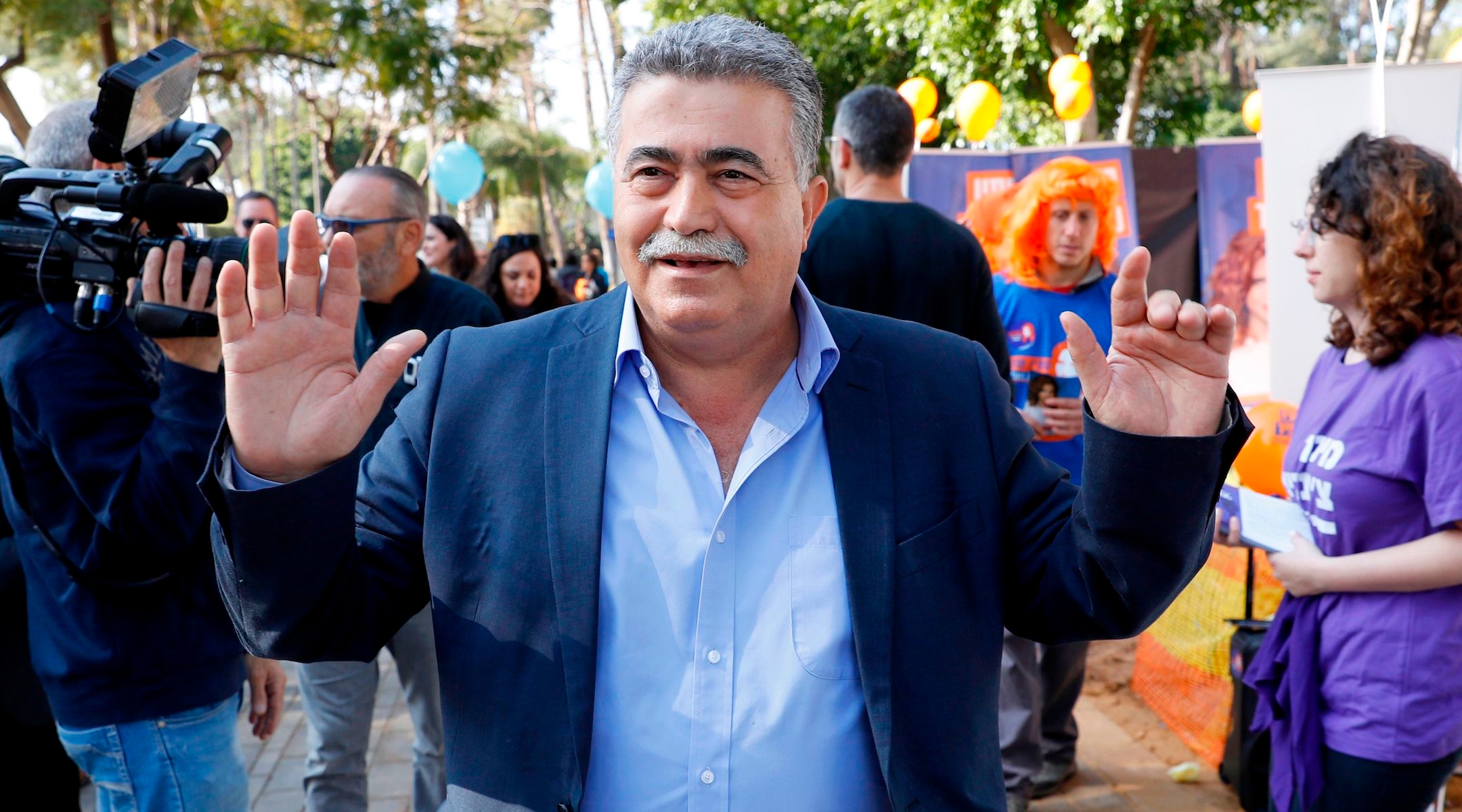
Amir Peretz, a former defense minister, poses during the Labor Party primaries in Tel Aviv, Feb. 11, 2019. (Jack Guez/Getty Images)
The party that founded the State of Israel and governed it for three straight decades is now, to put it bluntly, weak sauce.
The party of many Israeli political legends — think David Ben-Gurion, Golda Meir and Yitzhak Rabin — will now enter Knesset only as part of an alliance with two also-rans. It hasn’t won an election in two decades and has been supplanted as the main opposition party by Blue and White. Its best hope is to be a very junior coalition partner in the next government.
What happened? Labor used to be almost synonymous with Israel: It stood for social democracy, kibbutzim, a strong defense posture and negotiations with the Palestinians. In 1999, it was riding high: Party leader Ehud Barak had defeated Netanyahu in the election and was pushing toward a peace treaty with the Palestinians. But negotiations failed and the second intifada began — an unprecedented wave of terror attacks that led to a clampdown on Palestinians in the West Bank.
Since then, Labor has lost its mojo. Likud and its offshoots have led the Israeli government for the past 18 years. Israelis have lost hope in peace coming anytime soon (even though a large portion still supports Palestinian statehood). And the whole country, including Labor itself, has moved away from Israel’s former socialist identity. More of the country has become privatized, and though inequality remains high and housing prices have risen steadily, the overall economy is humming along.
Labor then tried to rebrand as a centrist party and came close to winning the election in 2015. But it garnered a record-low six seats in the April elections as voters gravitated to Blue and White. Afterward, Labor members elected former leader Amir Peretz to again head the party. Peretz had a decent showing last time he was in charge, winning 19 seats in 2006. He served then as defense minister, but stepped down following the 2006 Lebanon War, which was viewed as a failure.
Ahead of the September elections, Peretz again tacked to the center and joined up with an economically-focused centrist party called Gesher. But in that election, it did no better than its April result, again winning just six seats. Centrist voters appeared to again opt for Blue and White.
This time, Labor has again tacked left. Fearful of not winning enough votes to even enter Knesset, it has allied with Meretz, a staunchly left-wing party that favors Palestinian statehood and a social-democratic economy. The alliance, which also includes Gesher, is slated to win nine or 10 seats — just short of the combined 11 seats the parties won in September.
All in all, it’s been a precipitous decline. Not too long ago, the choice in Israel was between Likud on the right and Labor on the left. Now Labor doesn’t even have its own independent party, and is hardly part of the conversation.
— Ben Sales
Will Israeli Arabs maintain their political power?
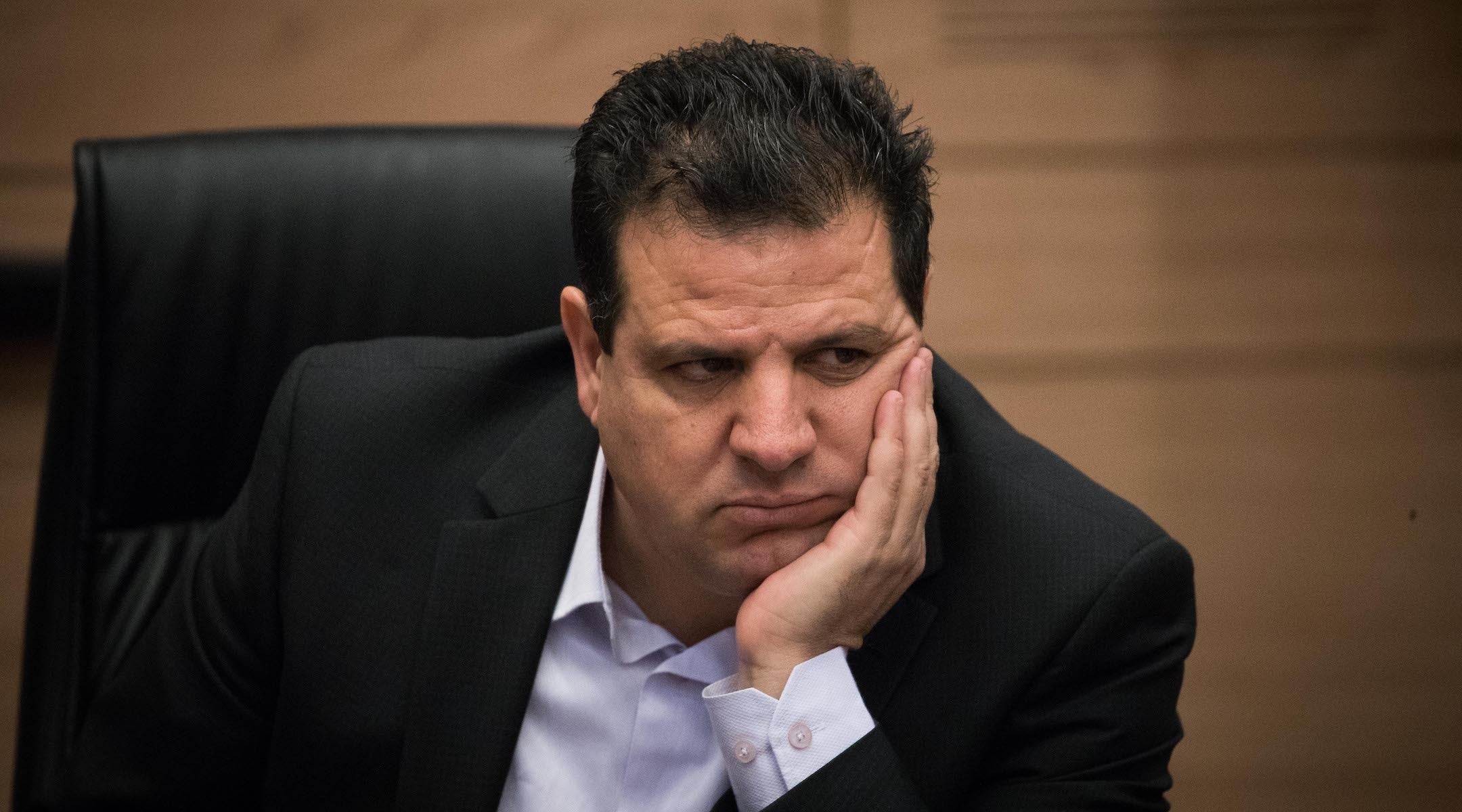
Ayman Odeh, the leader of the Hadash party, attends a Knesset session in Jerusalem, Jan. 1, 2019. (Yonatan Sindel/Flash90)
In some ways, Israel’s second election in September accomplished nothing and was completely forgettable. It had nearly the same results as the April election and led not to the formation of a government but not another election — with little movement in the polls since.
On the other hand, the September election was revolutionary — because of Israel’s lone Arab party, the Joint List.
For decades, Israel’s Arab voters and politicians have been on the sidelines. Israel’s Arab minority has the right to vote, but those votes usually don’t mean much. Arab-Israeli parties have never been part of Israeli governing coalitions and are usually at odds with both the Israeli Jewish left and right.
But in September, the Joint List won 13 seats, tying its record from 2015 and becoming Israel’s third-largest political party. And then it did something rare: Most of the Joint List, which is an alliance of four smaller factions, endorsed Gantz, the former general and head of the centrist Blue and White party, to be the next Israeli prime minister. It was the first time in 27 years that an Arab party had recommended a Jewish, Zionist candidate for the top job.
“We will be the cornerstone of democracy,” Joint List chair Ayman Odeh wrote in a New York Times op-ed explaining the decision. “Arab Palestinian citizens cannot change the course of Israel alone, but change is impossible without us. I have argued earlier that if the center-left parties of Israel believe that Arab Palestinian citizens have a place in this country, they must accept that we have a place in its politics.”
The Joint List has its roots in the 2015 election. Ahead of that vote, the four Arab-Israeli parties and became Israel’s third largest party, as well as a symbol of opposition to the right-wing government. Netanyahu’s fears of Arab political power culminated in an infamous Election Day video warning of “Arabs streaming in droves to the ballot box” (where, as citizens, they have the right to vote).
Despite its size following 2015, the Joint List could not block legislation that it opposed, including the Nation-State Law, which defined Israel as a Jewish state and reserved the right of national self-determination in Israel to Jews.
The Joint List split up last year and then got back together again ahead of the September vote. And Netanyahu’s Likud started paying attention to them again. During the April election, Likud sent private citizen observers with hidden cameras to film Arab polling places. Likud said the cameras were meant to ensure election security, but critics said they were aimed at intimidating voters and depressing the Arab turnout.
Israel’s Central Elections Committee then banned cameras in polling stations, prompting Netanyahu to accuse his opponents of trying to “steal the election.”
Jumping ahead to next week’s election, the Joint List hopes to remain Israel’s third-largest political party. But accomplishing that may not make much difference for Arab Israeli political power. Parties across the political spectrum have long refused to join coalitions with Arab-Israeli political parties. Politicians usually frame this refusal around the Arab-Israeli parties’ opposition to Zionism and Israel’s Jewish character, which are fundamental to the platforms of the major Jewish parties.
And despite the Joint List backing Gantz in September, Arab-Israeli parties have never been part of an Israeli government. Gantz and Odeh met in the subsequent weeks, but Gantz was unable to form a coalition government, triggering another round of elections and rendering the Joint List’s support moot.
Will Israel’s Arab politicians again line up behind a former Israeli general? Could this election result in a first-ever coalition that includes an Arab party? As with everything else, we won’t know until after the votes are counted.
